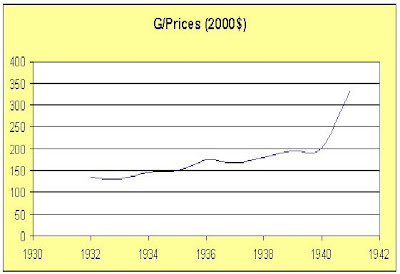In tracing the emergence and triumph within economic theory of the income-leisure trade-off model, Ugo Pagano (1986) gave an account of a compromise between English and Austrian marginalist circles about what could be regarded as the "ultimate standard of value": pain cost or opportunity cost. The English side of the debate, argued by F. Y. Edgeworth (1894), featured Jevons's calculus of pleasure and pain whereby, after a certain point, increased units of work time produced an increasing amount of pain or disutility while additional goods purchased with the income from those extra hours supplied diminishing increments of utility. At some point the increase in disutility from work matches the increment in utility from additional income and the worker will choose to stop working. The Austrian perspective, argued by Eugen von Böhm-Bawerk (1894), regarded cost as being wholly constituted by the sacrifice one had to make, given scarce resources, to be able to consume any particular bundle of goods. One had to allocate one's scarce resources between wants that were, in principle, unlimited. The Austrians considered the hours of work to be institutionally fixed by custom or law and thus any hypothetical pain or disutility of work was, for them, not a factor in the individual's utility calculus.
Eventually, a compromise between these two positions was achieved by adopting what Pagano referred to as a "leisure semantic device". This device originated in the work of Leon Walras (1954) and bridged the differences between English and Austrian approaches by finding a way of including work and leisure in the opportunity-cost equation. It did so by defining the "disutility of work" to consist solely in the fact that the worker had to sacrifice leisure time in order to obtain income. According to Pagano, the adoption of the device underlies modern economic theory's "almost complete ignorance of the difference between human labour and the other resources" (93).
According to this leisure device, labour can be divided into two parts, the first part of which is self-consumed as leisure. The second part is sold and used in the production of goods for other people. Pagano notes two advantages of the leisure device for treating labour: first, it enables the treatment of labour in the same way as other consumption goods and thus greatly simplifies the analysis. Second, because the amount of time available to each individual for working is constrained (there are only 24 hours in a day), the system does take into account – or at least seems to take into account – the fact that labour expended in production affects the welfare of individuals. The more time the individual works to obtain income, the less leisure time he or she is left with.
Despite those advantages, Pagano viewed that leisure device as very misleading because it assumes that workers are only affected by the total amount of labour time expended and not by the way in which that time is allocated to the performance of different tasks.
Next
Abstract: Sidney Chapman's theory of the hours of labour, published in 1909 in The Economic Journal, was acknowledged as authoritative by the leading economists of the day. It provided important insights into the prospects for market rationality with respect to work time arrangements and hinted at a profound immanent critique of economists' excessive concern with external wealth. Chapman's theory was consigned to obscurity by mathematical analyses that reverted heedlessly to outdated and naïve assumptions about the connection between hours and output. The Sandwichman is serializing "Missing: the strange disappearance of S. J. Chapman's theory of the hours of labour" on EconoSpeak in celebration of the centenary of publication of Chapman's theory. (To download the entire article in a pdf file, click on the article title.)





